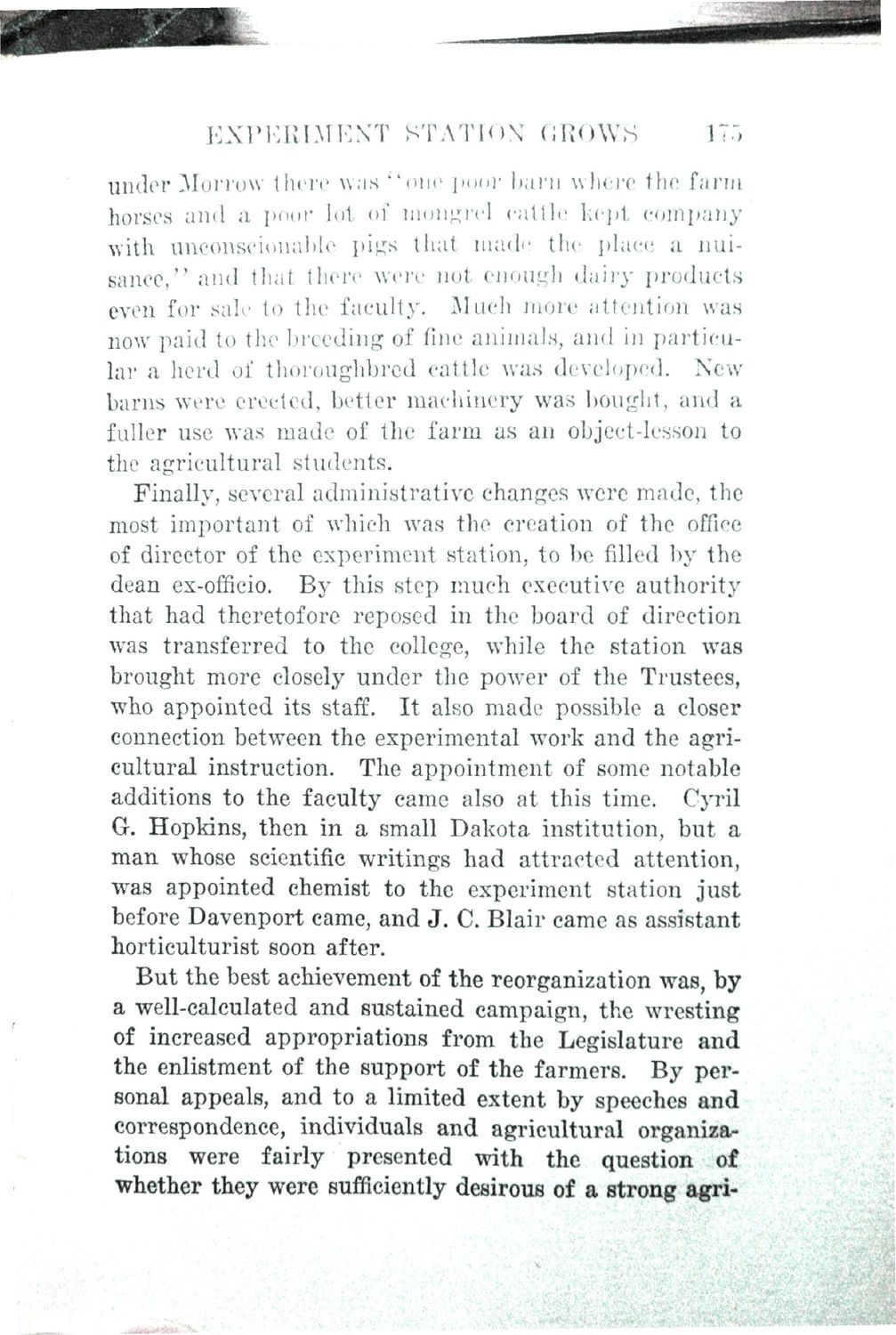| |
| |
Caption: Book - History of the University (Nevins)
This is a reduced-resolution page image for fast online browsing.

EXTRACTED TEXT FROM PAGE:
EXPERIMENT STATION GROWS 175 under Morrow there was "one poor barn where the farm horses and a poor lot of mongrel cattle kept company with unconscionable pigs that made the place a nuisance," and that there were not enough dairy products even for sale to the faculty. Much more attention was now paid to the breeding of fine animals, and in particular a herd of thoroughbred cattle was developed. New barns were erected, better machinery was bought, and a fuller use was made of the farm as an object-lesson to the agricultural students. Finally, several administrative changes were made, the most important of which was the creation of the office of director of the experiment station, to be filled by the dean ex-officio. By this step much executive authority that had theretofore reposed in the board of direction was transferred to the college, while the station was brought more closely under the power of the Trustees, who appointed its staff. It also made possible a closer connection between the experimental work and the agricultural instruction. The appointment of some notable additions to the faculty came also at this time|| Cyril G. Hopkins, then in a small Dakota institution, but a man whose scientific writings had attracted attention, was appointed chemist to the experiment station just before Davenport came, and J. C. Blair came as assistant horticulturist soon after. But the best achievement of the reorganization was, by a well-calculated and sustained campaign, the wresting of increased appropriations from the Legislature and the enlistment of the support of the farmersS By personal appeals, and to a limited extent by speeches and correspondence, individuals and agricultural organizations were fairly presented with the questioi!| of whether they were sufficiently desirous of a strong agrf-
| |